Cassinia sifton is a common native understorey species in our area and has important functions as a coloniser of damaged woodlands. It’s been known as Chinese Scrub as the gold miners of the 1850s thought the Chinese miners had brought it. Coffee Bush is another common term as it smells a bit like coffee (the instant variety as far as I can tell) and Drooping Cassinia is another.
Cassinia sifton
There is some contention about whether it is indigenous to Victoria or was introduced from by Europeans from NSW. Regardless of how long it’s been here, it’s certainly part of the ecosystem now and provides nesting habitat for birds, support for invertebrates and does a lot of catching of leaf litter to stop sheet erosion.
Autumn is the time that this species puts out it’s modest red flowers, drooping from the ends of it’s fragile foliage.
Cassinia flowers about to open
I gather that pollination for this species is thought mainly to be by wind, but over the years, I’ve tried to see if any insects might be involved at any point. Every now and then I find someone sitting on the flowers, but they only seem to use them as a perch.
Tricolor Soldier Beetles (Chauliognathus tricolor) are about and breeding in significant numbers and I have found some using Cassinia as a useful venue for their activity!
Tricolor Soldier Beetles on Cassinia sifton
When I look at my past photos of these beetles mating, it’s always late February or early March. While there are quite a few around, I have to say that their numbers are well short of previous years.
I’ve also found a few Bee Flies (Geron sp) resting on Cassinia flowers by day or snoozing on them at night. They don’t look to be interested in the flowers other than as a perch.
A Bee Fly snoozes on Cassinia at night
Night time is quite helpful for macrophotography as sleeping insects make much more amenable subjects than when they’re awake and likely to fly off. Lauxanid flies seem to be quite heavy sleepers, like this on on a garlic chive plant.
Lauxanid fly
In the generally impoverished insect fauna that we seem to have at the moment, I was pleased to find a few tiny Psyllid Bugs sucking on the branchlets of a Drooping Sheoak (Allocasuarina verticillata) in our yard. These were only a couple of millimetres long and challenged even my MP-E65 supermacro lens to get a good shot of. They were so intent on feeding that they were mercifully stationary.
Psyllid Bug
We’ve also had a few Red and Blue Beetles around, on both Cassinia and Sheoaks.
Red and Blue Beetle (Dicranolaius sp?)




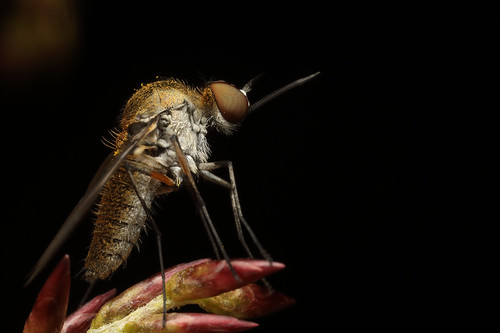


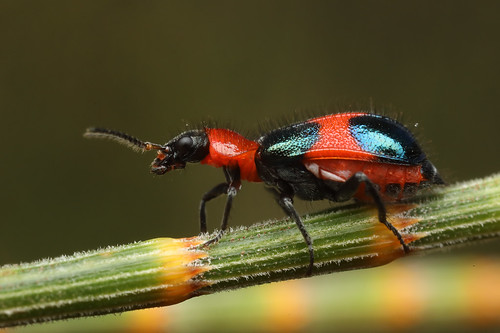


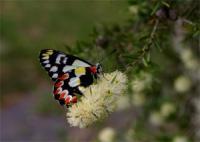
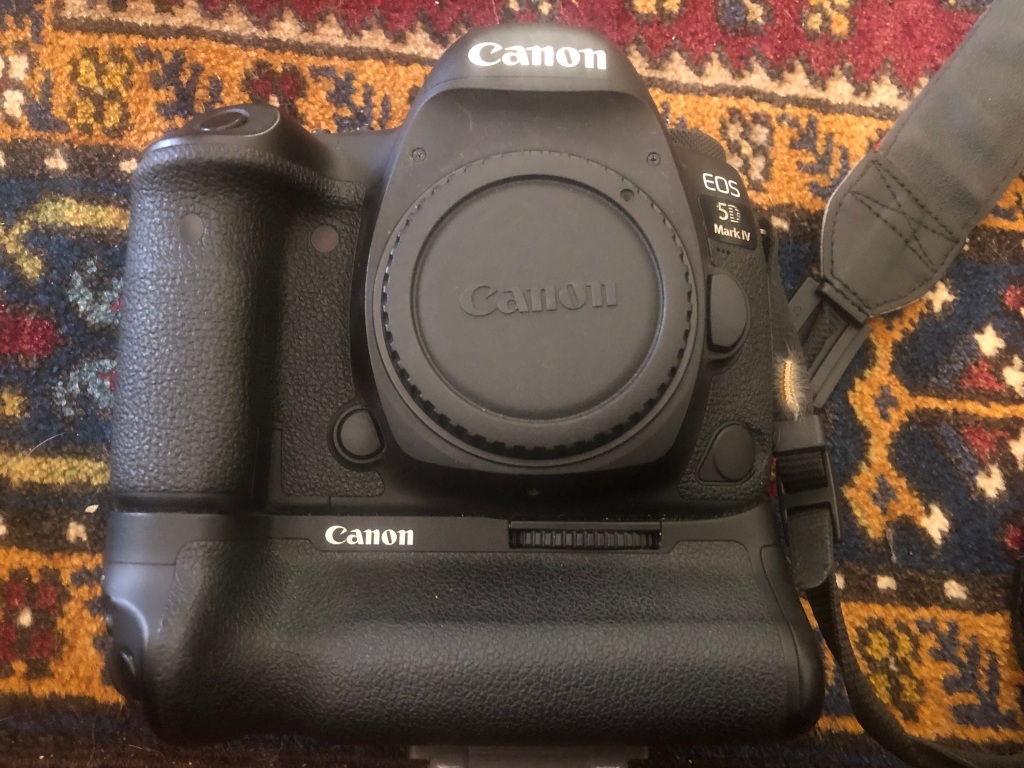
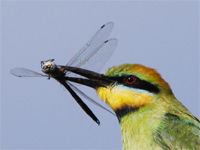





As usual your photos are fascinating. Thanks for the education!
We have Cassinia arcuata in our area Melbourne suburb). It is known as the curry bush and was also associated with the mining of gold and Chinese miners. White flowers rather than red but also haven’t seen much insect activity around the plants.
These micro observations and comments are very good for the spirit in these alarming times. Thank you Patrick and everyone who contributes here.
Fabulous pictures as ever, Patrick, thank you. I’ve seen less of the beetles this year, but many more bee flies than usual….
I’m interested in any fauna that might help reduce cassinia, as it can have a tendency to proliferate and take over in disturbed landscape. I understand there are some species that can be introduced, as with gorse, that both thrive and limit the spread…I am loathe to burn/mulch all of it because, as you mention it prevents erosion and is a fantastic habitat for many small birds. Apparently goats love it, but I’m not at the property all the time and wouldn’t be able to properly care for them.
All the best
Nick